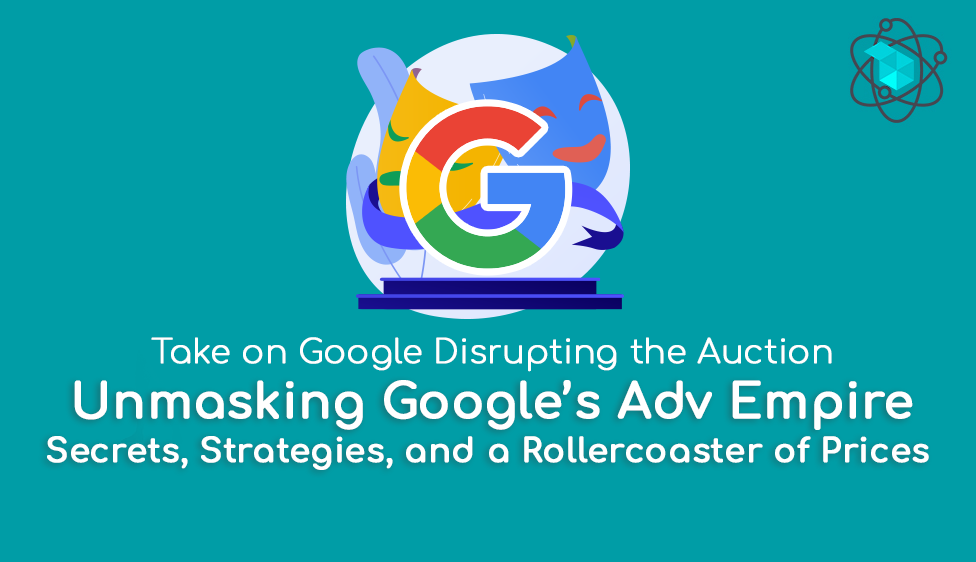In the vast digital realm, one name towers above the rest: Google. A juggernaut that commands the attention of marketers, businesses, and users worldwide – it’s a force that shapes the very landscape of online advertising. Yet, behind the familiar interface lies a world of algorithms, auctions, and strategies that dictate flow of digital commerce.
In this journey, we’ll embark on a quest to unravel the mysteries that shroud Google’s advertising empire. From auction adjustments to the impact on pricing strategies, each turn of the digital wheel reveals a new facet of this dynamic domain.
So, fasten your seatbelts and get ready to explore the heart of the digital colossus. Together, we’ll navigate the twists and turns, shedding light on the strategies that fuel this digital giant and the implications they hold for advertisers, both big and small.
The Secret Sauce of Google’s Success
With algorithms humming and ad spaces aplenty, Google it’s a realm where fortunes are made and brands are born. But what happens when the puppeteer behind the curtains starts pulling strings in secrecy? That, dear readers, is precisely the tale we’re about to unfold.
In a landscape where data reigns supreme, Google’s mastery in harnessing it for advertising is unparalleled. The algorithms, a symphony of mathematical wizardry, determine which ad gets the spotlight, leaving advertisers in awe and often scratching their heads. It’s like watching a master magician perform tricks you can’t quite fathom.
The Enigmatic Auction Adjustments
Imagine a magician revealing the secrets behind a flawless act – well, Google has come pretty close. They’ve openly admitted to something that raised eyebrows across the digital marketing landscape. In their quest to meet revenue targets, they’ve been adjusting ad auctions on the sly. It’s like a game of Monopoly where the rules evolve when you’re not looking. Sneaky? You bet.
These subtle adjustments in the auction dynamics have a ripple effect that advertisers feel, even if they can’t quite put their finger on it. Bids that once secured prime spots, suddenly find themselves in a different league. Keywords that were once cost-effective now demand a bit more from the budget. It’s like the game board suddenly tilting, sending players into a strategic frenzy.
Billions and Beyond: The Pricey Game of Ads
Now, let’s talk digits. In 2020, Google’s ad revenue shot past the $100 billion mark. That’s enough zeros to send even a mathematician into a dizzying spiral. But here’s the kicker: they’ve been quietly upping the stakes. Some queries saw prices raised by up to 10%. It’s like Google discovered a hidden treasure chest and decided to keep the loot for themselves.
The question on every advertiser’s mind: where does this leave their budgets? It’s akin to sitting at a poker table where the stakes keep rising, and you’re not quite sure if you’re holding a winning hand. The uncertainty adds a layer of complexity to an already intricate game.
The Memo That Never Came
And here’s the twist – they didn’t even send out a memo! How rrrude! Advertisers found themselves in a budgetary labyrinth, wondering why the numbers weren’t adding up. It’s akin to being handed a restaurant bill without any recollection of what you ordered. Surprise, anyone?
In a world where data-driven decisions reign supreme, being blindsided by pricing adjustments feels like a twist of fate. Advertisers, accustomed to a certain level of predictability, suddenly find themselves in uncharted territory. It’s like trying to navigate a maze with the map turned upside down.
Google’s Mystique: A Case of Transparency
Ah, Google, you’ve always had an air of mystique, haven’t you? We won’t call it secrecy, but you do have a penchant for keeping your cards close to the chest. The ongoing debate echoes: does the giant owe advertisers a peek behind the curtain of their auction adjustments? A dash of transparency might just do the trick.
The call for transparency isn’t a cry for trade secrets to be laid bare. It’s a plea for a clearer roadmap in an ever-evolving landscape. Advertisers, after all, are partners in this digital dance, and a bit of synchrony goes a long way.
Navigating the Digital Quicksand
So, what’s the takeaway? It’s evident that Google’s monopoly isn’t all rainbows and unicorns. Advertisers find themselves juggling numbers in a landscape that shifts like quicksand beneath their feet. It’s like building a sandcastle on a beach with ever-changing tides. Challenging, to say the least.
In this ever-shifting landscape, adaptability becomes the golden ticket. The ability to pivot, to readjust strategies, and to anticipate the next move is what separates the innovators from the rest.
A Rollercoaster Ride Through the Digital Carnival
In conclusion, dear readers, the story of Google’s pricing strategies and transparency is like a rollercoaster ride through a digital carnival. Twists, turns, and surprises await at every commanding corner. As we navigate this landscape, let’s hope for a bit more clarity, a sprinkle of fairness, and maybe a touch of magic to make it all worthwhile.
The digital realm is a stage where the players may change, but the show goes on. Let’s stay agile, keep our eyes on the prize, and remember that in this carnival of code, it’s the savvy navigator who emerges victorious.

